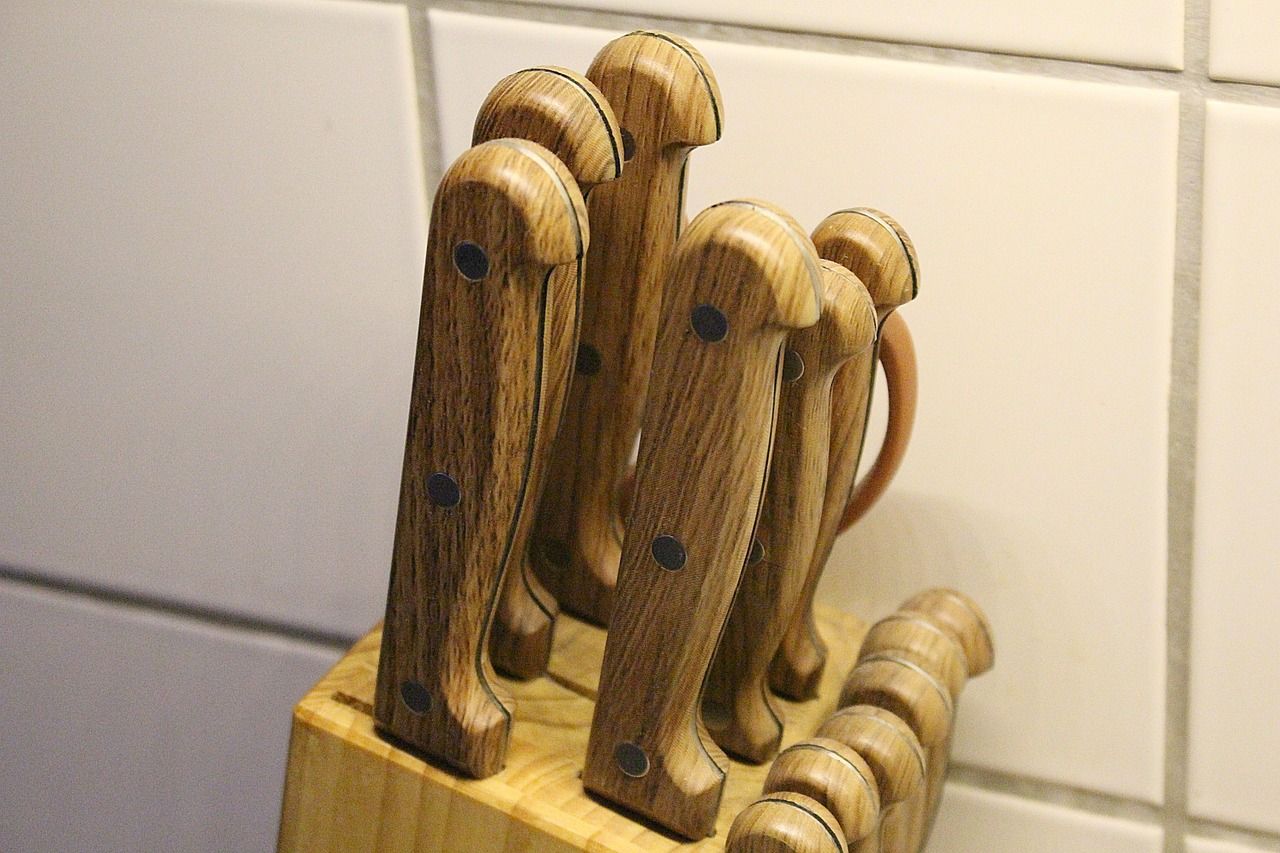A knife set is a valuable asset in any kitchen, enabling you to prepare meals efficiently and enjoyably. However, maintaining your knife set is crucial to ensure its longevity and optimal performance.
This micro-post will guide you through the essential steps of knife set maintenance, from proper cleaning and drying to honing, sharpening, and even storage. By following these tips, you can ensure your knife set remains in top condition for years to come.
In This Article
- The Importance of Knife Maintenance
- Proper Cleaning and Drying
- Honing and Sharpening
- Proper Storage
- Avoiding Common Mistakes
- Frequently Asked Questions
- Conclusion
- Further Reading
The Importance of Knife Maintenance
Maintaining your knife set is not just about keeping your knives looking shiny and new. It's about ensuring they perform at their best and last as long as possible. A well-maintained knife is safer to use, cuts more efficiently, and offers a better cooking experience.
Whether you're a professional chef or a home cook, taking care of your knives should be a priority.
Proper Cleaning and Drying
One of the most fundamental steps in knife maintenance is proper cleaning and drying.
After each use, wash your knives by hand with warm water and mild dish soap. Avoid using abrasive scrubbers that can scratch the blade. Once clean, dry your knives immediately with a soft cloth to prevent water spots and potential rusting.
Never leave your knives soaking in water or put them in the dishwasher, as this can cause damage over time.
Honing and Sharpening
Keeping your knives sharp is another critical aspect of knife maintenance. Regular honing with a honing rod can help keep the blade's edge aligned and sharp.
However, honing doesn't actually sharpen the blade; you'll need a knife sharpener or a whetstone. Sharpening removes a small amount of material from the blade to create a new, sharp edge.
Depending on how often you use your knives, you may need to sharpen them every few months to a year.
Proper Storage
How you store your knives can also affect their longevity.
Avoid storing your knives loosely in a drawer where they can get damaged. Instead, use a knife block, a magnetic knife strip, or individual blade guards.
These storage methods protect your knives' blades from damage and make it easy to access your knives when needed.
Avoiding Common Mistakes
People make several common mistakes when it comes to knife maintenance. One of these is using the wrong cutting surface.
Hard surfaces like glass, marble, or metal can dull your knives quickly. It's better to use a wooden or plastic cutting board.
Another mistake is using your knife to perform tasks it's not designed for, like opening cans or prying lids. This can damage the blade and potentially lead to accidents.
Frequently Asked Questions
How often should I sharpen my knives?
The frequency of sharpening depends on how often you use your knives. However, a good rule of thumb is to sharpen them every few months to a year. If you notice your knife is not cutting as efficiently as it used to, it's probably time to sharpen it.
Can I wash my knives in the dishwasher?
While some knives are labeled as dishwasher safe, it's generally best to hand wash your knives. The dishwasher can be harsh on knives, leading to dulling, rusting, and damage to the handle.
What's the difference between honing and sharpening?
Honing involves realigning the edge of the blade without removing any material, which helps maintain the knife's sharpness. On the other hand, sharpening involves removing a small amount of material from the blade to create a new, sharp edge.
What's the best way to store my knives?
The best way to store your knives is in a knife block, on a magnetic knife strip, or using individual blade guards. These methods protect the blades from damage and keep your knives easily accessible.
Conclusion
Maintaining your knife set is an essential part of kitchen upkeep. By cleaning and drying your knives properly, honing and sharpening them regularly, storing them correctly, and avoiding common mistakes, you can ensure your knife set remains in top condition for years to come. Remember, a well-maintained knife set is not only a joy to use but also a safer choice for your kitchen.
Further Reading
- Smart Selection: Choosing a Budget-Friendly Knife Set: If you're in the market for a new knife set, this article can help. It outlines the key considerations when choosing a budget-friendly knife set that doesn't compromise on quality.
- Budget-Friendly Knife Sets: The Material Matters: Learn why the material of your knife set matters. This article explores the strengths and weaknesses of different materials and their influence on the performance and lifespan of your knives.
- Ensure your knives stay sharp and pristine; check out KPL's article on 'What to Keep in a Knife Maintenance Tool Kit'.
- If you're in the market for a new knife set that won't break the bank, be sure to check out our article on the best knife set under $100.



